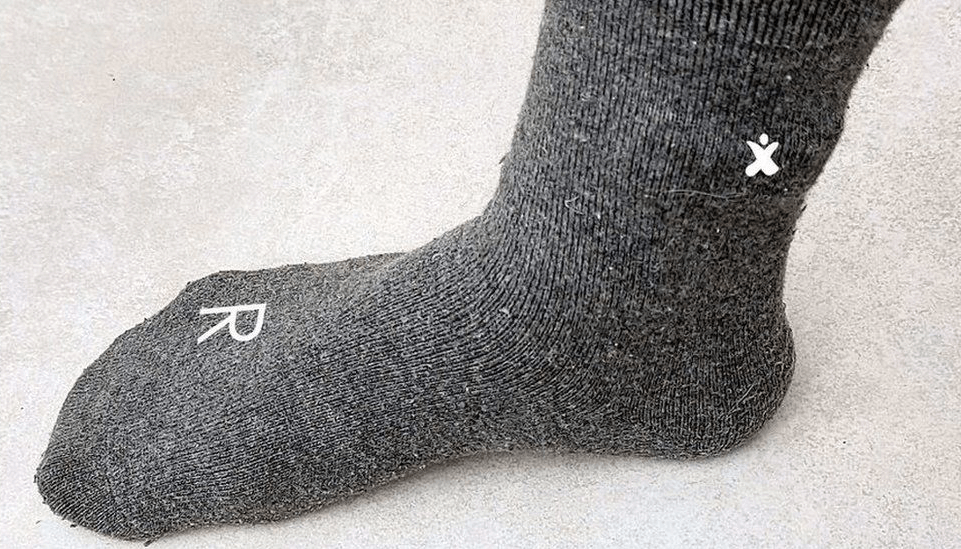Researcher develops smart socks for those with dementia and autism
12-05-2022 | By Robin Mitchell
Recently, a PhD student has announced the development of a smart sock that can be used to detect levels of potential stress in those with dementia and autism. What challenges do current wearable technologies face, what did the researcher develop, and how will such wearable technologies change the future of medical care?
What challenges does the future of wearable technology in healthcare face?
Despite vast amounts of technological advancements in the field of electronics, wearable electronics are still in their infancy. Most wearable devices are often large, bulky, and ridged, meaning that while they can be attached to a body, they are uncomfortable or at the very least noticeable. The reason for this comes down to the nature of electronic components being constructed from rigid materials, whether it is carbon found in resistors, semiconductor crystals used in ICs, or plastic domes in LEDs.
But the ridged nature of modern wearable electronics does not stop them from being useable. For example, the Apple Watch can be worn on the wrist and provide complex features, such as health monitoring, location tracking, or making calls. Another example of a functional device is the Fitbit, which can track steps, sense vibrations, read blood oxygen, and measure heart rate. In fact, some medical researchers are looking into the accuracy of such devices and whether they can be used in predictive medicine to catch diseases in their early stages (and hence more likely to be treatable).
However, there exists another challenge with ridged devices that can render them impractical when used with those who suffer from dementia or autism; irritability. Dementia patients often suffer from confusion, and having a large device attached to their arm can cause distress (this will often see the patient trying to remove the device). In the case of autism, hypersensitivity to stimuli caused by a device worn on the arm can be extremely distressing (similar to that of burning and/or skin scraping).
Considering that wearable devices in healthcare can be ideal for tracking patient movements and monitoring their state of health, not being able to use current technology on some of the most vulnerable presents a serious problem for wellbeing and care.
PhD student develops smart socks for comfort sensing
Recently, a PhD research student from the University of Bristol has developed a smart sock that can provide key sensor details for medical staff while being comfortable to wear. Inspired by his great-grandmother, who was suffering from Dementia, Dr Zeke Steer decided to develop the technology to help those who suffer from confusion or hypersensitivity. Furthermore, the technology also allows medical staff to see signs of stress before it can escalate something which can be extremely dangerous to both patients and medical staff.
The socks embed multiple sensors using e-textiles that look for various biomarkers, including heart rate, sweat, and motion. This data is then fed into a mobile app that uses deep learning to identify patterns of potential stress. So far, the socks have been able to demonstrate stress before it becomes significant and could prove to be a vital tool in future care for vulnerable patients whose state of mind may not be easy to determine. Additionally, the socks developed are machine washable, meaning that they can easily be kept clean while providing medical sensing capabilities.
The development of the socks has led Dr Zeke Steer to form the company Milbotix, and the Alzheimer’s Society has now announced that it will help support Milbotix through its Accelerator Programme.

How could such wearable devices help change the future of medical care?
The ability to discrete measure biomarkers without dangling wires, large power adaptors, or complex machinery presents the medical industry with a wide range of possibilities in both patient monitoring and intelligent care.
One area of particular interest is the ability to free up hospital space for those who need it most. Currently, patients after procedures will be required to stay in a hospital for a minimum amount of time to ensure that no complications arise (such as secondary infections, condition of stitches, and general wellbeing). However, most patients who are forced to stay in the hospital do not need additional monitoring, and it is here where the benefits of wearable medical sensors in healthcare could be vital.
Instead of taking up hospital space, patients could be given the option to return home on the condition of wearing a smart shirt and socks. These devices would measure key biomarkers that would then be streamed to the medical staff at the local hospital for remote monitoring. Patients who show unusual biomarker data could then have a nurse sent to evaluate the patient in their home, and a decision to bring them back could be made.
Overall, these socks demonstrate what wearable electronics should be like, and their development and impact of wearable technology in healthcare present the medical industry with exciting new opportunities in patient care and monitoring.

